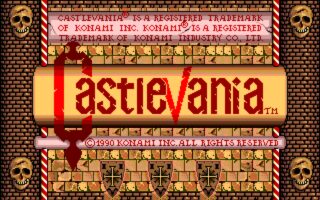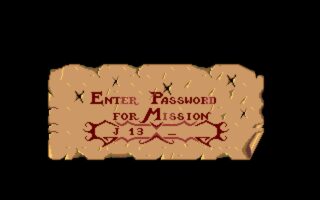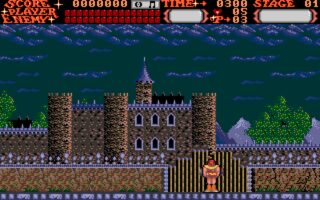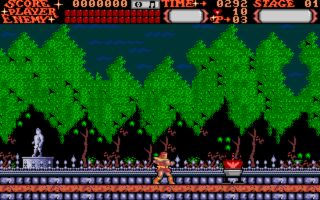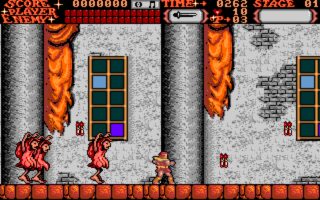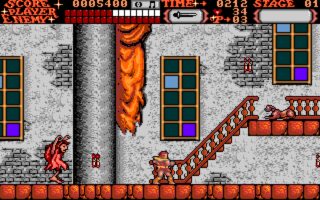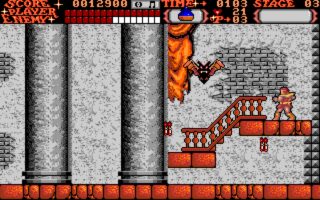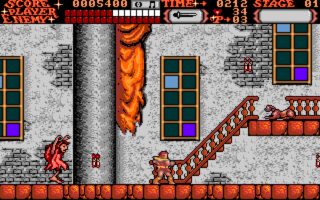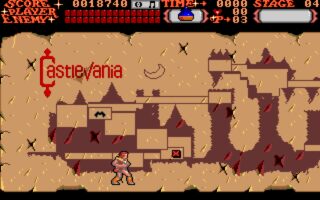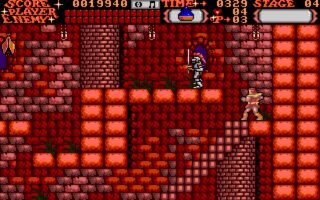Castlevania, released in 1987 in North America for the NES, marked the beginning of one of Konami’s most iconic franchises. Designed by Hitoshi Akamatsu (as later confirmed through interviews and credits), the game combined action-platforming mechanics with gothic horror themes, setting a new tone for side-scrolling games on the 8-bit console.
You play as Simon Belmont, a vampire hunter armed with a whip, making your way through Dracula’s castle to defeat the infamous vampire. The journey is divided into six main stages, each packed with dangerous enemies, sub-bosses, and a climactic boss fight at the end. The level design is linear but cleverly constructed, with tight platforming challenges and strategic placement of items and enemies. Players can collect sub-weapons like the axe, holy water, or boomerang, each consuming limited hearts that you gather throughout the level.
What made Castlevania stand out at the time was its unusually high level of difficulty. Simon's stiff jumping controls and limited health recovery added a strategic layer that demanded memorization and precise execution. The bosses—like the Grim Reaper or Frankenstein’s monster—required careful timing and use of the right sub-weapon, giving the game an almost puzzle-like challenge.
Technically, Castlevania showcased what the NES was capable of in 1987. The graphics used the limited color palette effectively to evoke a dark, eerie castle atmosphere, and the music by Kinuyo Yamashita and Satoe Terashima became instantly iconic. Tracks like "Vampire Killer" and "Wicked Child" remain fan favorites and were reused and remixed in later series entries.
Compared to other action games of the time, such as Ghosts 'N Goblins or Ninja Gaiden, Castlevania focused less on speed and more on atmosphere and precision. It laid the groundwork not only for its direct sequels but for an entire subgenre of games. Though later titles like Castlevania III would add nonlinear progression and more characters, the original's tight, punishing design still holds up as a landmark of NES-era game development.
Even today, Castlevania is remembered as a foundational platformer, and one that helped establish the NES as a home for more mature, challenging games. Its influence would stretch into future generations, eventually helping define the "Metroidvania" genre alongside Metroid—though at this stage, it was still a strictly linear, stage-based experience.
Castlevania received some ports in 1989-1990, with a Commodore 64 version, and an Amiga and MS-DOS version.
Overall, none of these home computer versions matched the NES release's quality. They remain interesting footnotes for collectors or fans of the franchise, but for the definitive experience of Castlevania, the original NES version remains the gold standard.

